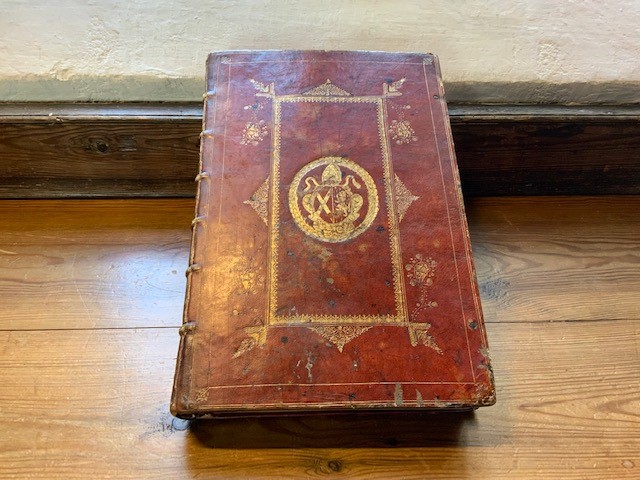 A number of historic and symbolic rituals were included in the Service of Welcome and Installation at Wells Cathedral on the 12 November for the Rt Revd Michael Beasley, 80th Bishop of Bath and Wells.
A number of historic and symbolic rituals were included in the Service of Welcome and Installation at Wells Cathedral on the 12 November for the Rt Revd Michael Beasley, 80th Bishop of Bath and Wells.
Bishop Michael processed from the Bishop's Palace in Wells across to the Cathedral, accompanied by a number of young people who took part in the selection process. At the Cathedral he was formally greeted by Jasmine, representing the children of the diocese.


Bishop Michael made his Oath of Allegiance to the King on Bishop Robert Creyghtone’s Bible which dates back to 1633.


After making his oath Bishop Michael knelt at the nave sanctuary steps, where he was anointed with consecrated oil by the Revd Narinder Tegally, Lead Chaplain, Royal United Hospitals Bath NHS Foundation Trust; retired priest the Revd Pam Cuff and recently ordained curate and school chaplain, Revd George Beverly.


He then received the episcopal ring from the Revd Dr Jonathan Pye, Chair of the Bristol District of the Methodist Church and Churches Together in Somerset.


The ring dates from the 15th century and was first worn by former Bishop of Bath and Wells, Thomas Beckynton. Bishop Thomas Beckington is still recognised in Wells for gifting a free supply of water to the city, which still runs through an underground conduit from St. Andrews well in the Palace grounds to the marketplace, with the surplus of water running freely down the High Street. Every year on the nearest Sunday to his death on the 14 January the city’s mayor and council place flowers on his tomb in the Cathedral.
The Dean, standing before the Bishop, then asked the Archdeacon of Canterbury, who represented the Archbishop of Canterbury at the service, to place Bishop Michael in his seat.


Later in the service Bishop Ruth presented Bishop Michael with a diocesan crozier.

Towards the close of the service Bishop Michael moved to the Great West Doors of the Cathedral to bless the city and the diocese.

One of the most well-known and visible historic items was the Coronation Cope worn by Bishop Michael. Originally commissioned for Bishop Kennion to wear at the Coronation of HRH Edward VII in 1902, it has been worn by the Bishops of Bath and Wells at the three subsequent coronations.
The cream silk damask cope, or cloak, features a sunburst design in couched gold thread, edged in dark blue velvet with the gold shields depicting the cross of St Andrew, the keys of St Peter and the sword of St Paul. A faux hood, also dark blue velvet, is embroidered with couched gold thread and coloured silk threads and features the Greek name for Jesus: IHOUS.
Ahead of the installation of Bishop Michael, the cope was taken out from the bespoke cope chest at the Bishop’s Palace in Wells where it is on display. A thorough examination of the Cope was undertaken to determine if the cope was in good enough condition to be worn. Despite being kept in carefully controlled conditions, some repairs were needed before the final decision was made.
Hilary Farthing, who is not only a trained and experienced needlewoman, but also a former day manager at the Bishop’s Palace, undertook the conservation work.
“I have worked with textiles all my life, including in the antique textiles trade and also in the bridal industry, making bespoke wedding dresses for many years. Working on the Coronation Cope is something quite different and special for me – it is intriguing to reflect on the history of the Cope and the occasions it has been used. I marvel at the workmanship and think about the lives of those who created it and those that have worn it.
She spent many hours conserving the gold stitching on the cope, sewing a protective layer of silk tulle over areas of damaged damask silk and making repairs to the lining of the cope.